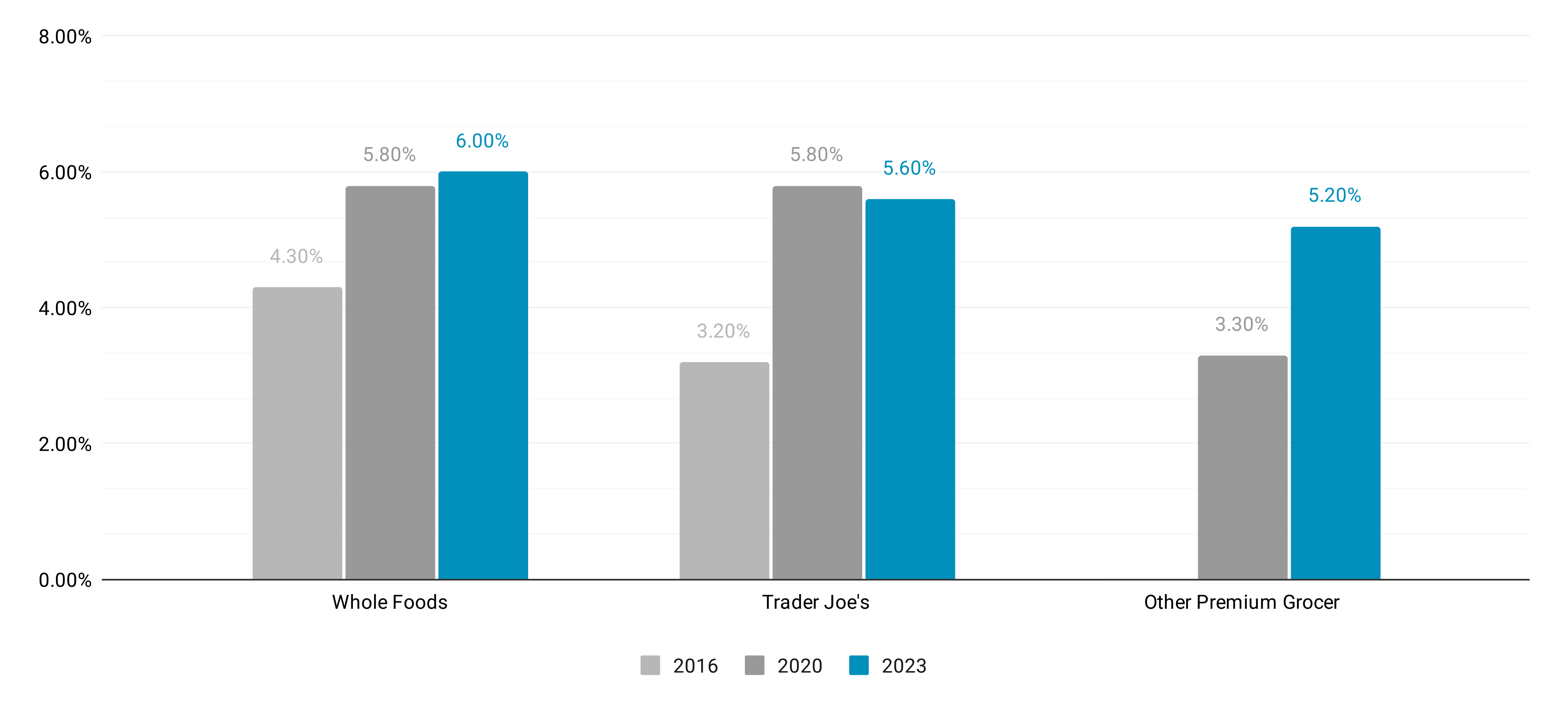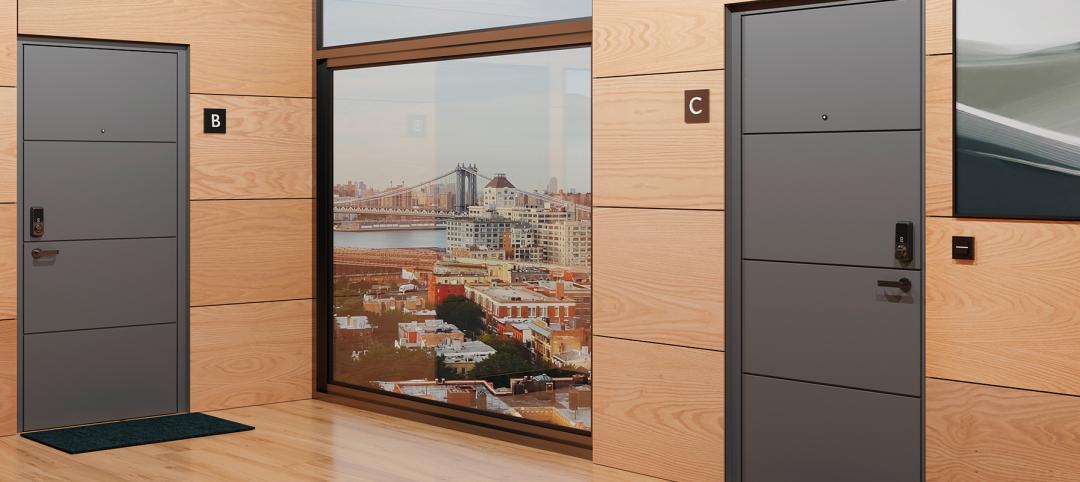Optimizing land usage is becoming an even bigger priority for developers. In some city centers, many large grocery stores sprawl across valuable land. This inefficient use of space doesn't reflect the best possible use for these desirable locations, according to the recent RCLCO report The Supermarket Rental Sweep: Analyzing Multifamily Rent Premiums Generated by Grocery Store Anchors.
One way for grocers and retail outlets to increase interest in a desirable location is by partnering with multifamily developers. The strategy of building housing above a ground floor store not only adds an extra amenity for residents, but increases the rental premium desired by developers.
Rental Rate Premiums from Ground-Floor Grocers
The multifamily performance of such partnerships is nothing to scoff at. The RCLCO analysis finds that apartment communities with a ground-floor Whole Foods achieve a rental rate premium of 6% on average—comparable to similar communities in the immediate area.
A similar figure is present for Trader Joe communities; these premiums average out to 5.6% which is down only slightly from 5.8% in 2020. In other premium grocers like Fairway, Safeway, Sprouts, and Harris Teeter, the above-ground community premium increased from 3.3% in 2020 to 5.2% in the 2023 study.
Rent Premium by Grocer

For its analysis, RCLCO looked at the scale, age, type of construction, quality, and market positioning of nearly 100 mixed-use centers compared to their local counterparts. These include 37 multifamily properties with a ground-floor Whole Foods, 21 with Trader Joe’s, and 30 with other premium grocers.
RCLCO identified two to five similar apartment buildings in each local neighborhood and adjusted the rents to account for size differences. Then, they compared the adjusted rents of these similar buildings to the average rent in the grocer-anchored case study building. The researchers believe this methodology led to a quality-adjusted comparison that could point to the direct impact that a ground-floor grocer has on a community (as opposed to rent prices being higher due to higher quality amenities and finishes).
In general, the strong performance of apartments with ground-floor grocers since RCLCO’s 2016 study indicates that “the momentum for these mixed-use offerings continues to grow.”
Click here to read the full findings of the RCLCO report: The Supermarket Rental Sweep: Analyzing Multifamily Rent Premiums Generated by Grocery Store Anchors
RELATED
Related Stories
Apartments | Mar 13, 2024
A landscaped canyon runs through this luxury apartment development in Denver
Set to open in April, One River North is a 16-story, 187-unit luxury apartment building with private, open-air terraces located in Denver’s RiNo arts district. Biophilic design plays a central role throughout the building, allowing residents to connect with nature and providing a distinctive living experience.
Affordable Housing | Mar 12, 2024
An all-electric affordable housing project in Southern California offers 48 apartments plus community spaces
In Santa Monica, Calif., Brunson Terrace is an all-electric, 100% affordable housing project that’s over eight times more energy efficient than similar buildings, according to architect Brooks + Scarpa. Located across the street from Santa Monica College, the net zero building has been certified LEED Platinum.
MFPRO+ News | Mar 12, 2024
Multifamily housing starts and permitting activity drop 10% year-over-year
The past year saw over 1.4 million new homes added to the national housing inventory. Despite the 4% growth in units, both the number of new homes under construction and the number of permits dropped year-over-year.
Affordable Housing | Mar 11, 2024
Los Angeles’s streamlined approval policies leading to boom in affordable housing plans
Since December 2022, Los Angeles’s planning department has received plans for more than 13,770 affordable units. The number of units put in the approval pipeline in roughly one year is just below the total number of affordable units approved in Los Angeles in 2020, 2021, and 2022 combined.
MFPRO+ Special Reports | Mar 6, 2024
Top 10 trends in senior living facilities for 2024
The 65-and-over population is growing faster than any other age group. Architects, engineers, and contractors are coming up with creative senior housing solutions to better serve this burgeoning cohort.
MFPRO+ News | Mar 2, 2024
Job gains boost Yardi Matrix National Rent Forecast for 2024
Multifamily asking rents broke the five-month streak of sequential average declines in January, rising 0.07 percent, shows a new special report from Yardi Matrix.
MFPRO+ News | Mar 1, 2024
Housing affordability, speed of construction are top of mind for multifamily architecture and construction firms
The 2023 Multifamily Giants get creative to solve the affordability crisis, while helping their developer clients build faster and more economically.
MFPRO+ Research | Feb 28, 2024
New download: BD+C's 2023 Multifamily Amenities report
New research from Building Design+Construction and Multifamily Pro+ highlights the 127 top amenities that developers, property owners, architects, contractors, and builders are providing in today’s apartment, condominium, student housing, and senior living communities.
Affordable Housing | Feb 26, 2024
Biden-Harris Administration announces historic homelessness assistance funding
The Biden-Harris Administration allocation of $3.16 billion in homelessness assistance funding will be administered by the U.S. Department of Housing and Urban Development through the Continuum of Care Program.


















